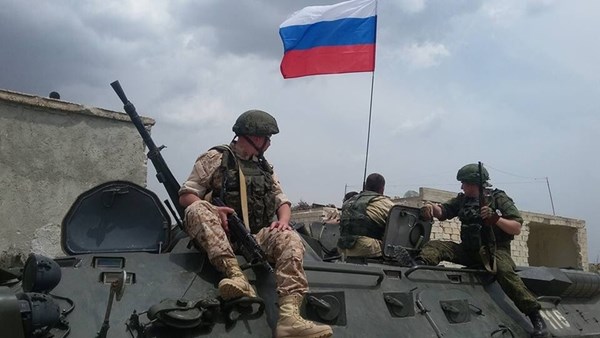Russian intensifies offensive in Zaporizhzhia region
According to military analysts, the offensive in the Zaporizhzhia region has already begun. Robotyne is almost entirely under Russian control, raising questions about combat operations in the summer of 2024. The Russian army aims to recapture territories liberated by Ukrainian forces in 2023 during the summer counteroffensive. Recently, the villages of Urozhaine and Krynky came under Russian occupation, with Ukrainian defense forces repositioning to more advantageous locations.
Notably, Russian troops appear to be mobilising for a new assault, as reserves are being redirected to the region. According to Petro Andriushchenko, advisor to the mayor of Mariupol, the movements by Russian forces are described as "strange." Patterns from the past week indicate a concentration of enemy efforts in the Zaporizhzhia region. Andriushchenko notes that troops are converging from different regions, including Novoazovsk and Donetsk, moving towards the Zaporizhzhia front, notably via directions like "Rozivka — Polohy" and Tokmak, closer to the front lines.
Clearly, the Russian forces are attempting to reclaim territories liberated during Ukraine's counteroffensive in Zaporizhzhia and southern Donetsk regions. Urozhaine village in the Volnovakha district recently fell under Russian control. It was one of the few southern villages Ukraine freed in the summer of 2023. The Russian Ministry of Defense reported on Urozhaine's occupation on July 14, but it was actually lost a month earlier, according to Ukrainian military correspondent Bohdan Miroshnykov. The village was completely destroyed, forcing Ukrainian defense forces to reposition.
Reports indicate Ukrainian troops have also withdrawn from Krynky. Russian units have rebuilt positions and established new fortifications, while Ukrainian forces have shifted westward, striking Russian positions on the left bank of the Dnipro. Roman Pogorelyi, co-founder of DeepState, suggests that the Russian army may advance further on the right bank.
As of the evening of July 18, Russian forces have also advanced in areas near Novoselivka Stepna, Nevske, Prohres, and Novoselivka Pervaya, situated in Kharkiv, Luhansk, and Donetsk regions.
The General Staff of the Ukrainian Armed Forces reported five unsuccessful Russian attempts to attack Ukrainian units in the Orikhiv direction near Mala Tokmachka, Robotyne, and towards Novoandreivka and Nesteryanka on July 18. In Mala Tokmachka, the enemy employs small infantry assault groups using motorcycles instead of armored vehicles, said Dmytro Likhovyi, spokesperson for the Tavriya operational-strategic group. Likhovyi reported four attacks in a single day, two involving multiple motorcycles, resulting in the destruction of three enemy motorcycles and their riders by Ukrainian defense forces.
Despite setbacks, Russian forces actively advance around the Robotyne salient. The Russian command aims to revert to the gains made by May 2023 before the end of summer 2024, believes Alexander Kovalenko, military expert and coordinator of the "Information Resistance" group.
"The attempt to reclaim territories liberated by Ukrainian forces is ongoing. The main objective now is to advance in the Vremivka direction along Mokri Yaly and seize the Robotyne salient. Additional units and resources are being transferred to the temporarily occupied territories of the Zaporizhzhia region," Kovalenko told Focus.
The Dnepr group, primarily operating in Zaporizhzhia, stretches between the Kherson's left bank and part of the Zaporizhzhia region, with a manpower of no more than 120,000. Kovalenko considers the likelihood of a successful Russian advance in Zaporizhzhia minimal. Ukrainian forces are closer to the northern part of Robotyne, resisting Russian advances.
"Fully capturing the Robotyne salient by summer's end seems highly unlikely for Russian troops," he emphasised. Military expert Pavlo Narozhny shares this view, seeing limited success for Russian troops in Zaporizhzhia. While assault actions are frequent, the primary combat focus remains on Donbas. Russian capabilities do not currently support significant escalations.
Successful offensives require concentrated artillery and aerial bombardments, alongside the deployment of armor. Narozhny stresses that in places like Robotyne and Krynky, Russians obliterated villages with heavy artillery, airstrikes, and thermobaric weapons like the TOS-1A. The extensive bombardment leaves defending such locales impractical, forcing troops to retreat to fortified areas capable of sustaining resistances.
In the battles for Vovchansk, Ukrainian forces expelled Russian units from the street in the city's northeast. Russians frequently use TOS-1A "Solntsepek" and guided aerial bombs in combat. The Russian army lost approximately 3,000 tanks and 5,000 other armored vehicles in the first two years of the conflict.
